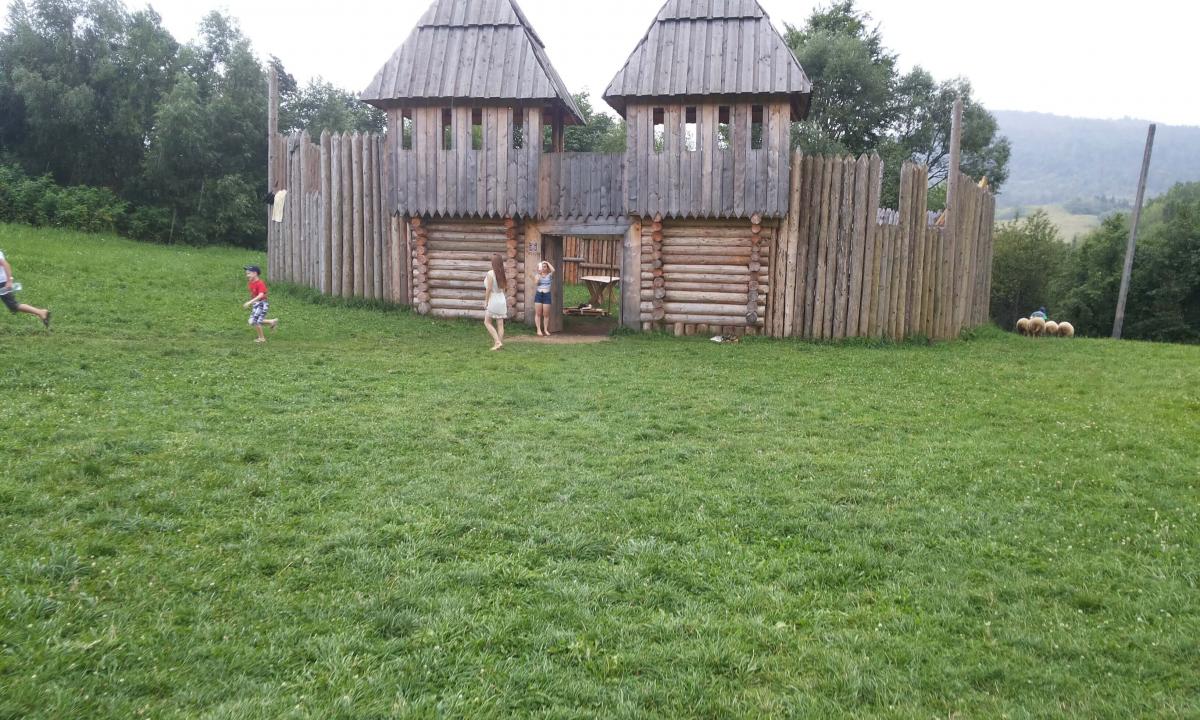– historically, the ancient city in the Ukrainian Carpathians playing once important role in life of the neighboring people – is today the historical and cultural reserve. He settles down near the village Urych near Borislav that in the Lviv region. Initially, on the Uritsky rocks towering there was a wooden fortress which fragments remained up to this day – they, mainly, and attract tourists and archeologists. However the history Tustani is represented much more long, than probable date of construction of this strengthening.
Really, as show researches and archeological finds, the person chose Uritsky rocks for a long time – humus layers that lies in foundation of rocks, show a set of cultural layers. At different times here the set interesting in terms of history and unique finds allowing to judge how there lived people who were once living in these parts was made. Among tustansky finds – ceramics, weapon fragments, household items. This area, at least, since the 9th century – though was manned in view of extremely convenient device of Uritsky rocks, sets of caves and cracks in breed can be judged that, as before they were used as the place for parking and arrangement of settlements.
And this is true! Researches showed that these places (Tustan), at least, throughout the I millennium were manned B.C. In those days here the ancient tribes of Thracians which equipped a pagan sanctuary in Uritsky rocks lived. Still on stones it is possible to notice pre-Christian symbols, solar signs and petroglyphs – once here worshipped the Sun. Nearby archeologists found also the Thracian settlement which traces can be seen near the village of Podgorodtsa. However over time the Thracian tribes sank Into oblivion, having mixed up with other people.
Tustani's eminence began with the 9th century. Thanks to the geographical location, fortress became the frontier post of Kievan Rus', and later – the Galitsko-Volynsky principality. Since ancient times in the territory of Ukraine extracted salt and exported it to Europe – in exchange carried other goods. So, Tustan soon began to perform function of a customs post. Archeologists found the ancient coins coming from various regions and the countries here – even the Arabian dirhems were found here. Had the fortress and important defensive value, making the line of strengthenings of Galicia together with other strengthened cities. During the domongolsky period the city lived and prospered, regularly passing travelers and merchants through the gate.
In the first half of the 13th century Tustan was influenced by invasion of Mongol Tatars. Troops of Batyya razed the city practically to the ground – only the nearby village of the same name and a citadel on the rock partially survived. Century later the Polish king Kazimir attached it to the Polish Corona – so, the city for a long time was a part of Poland. Kazimir made thorough reconstruction of Tustani, and it started over again prospering. Being initially royal fortress, over time it departed in private possession of the Polish magnates who also restored, strengthened and decorated the city.
Nevertheless, in view of change of frontiers of neighboring countries, Tustan soon began to fall into decay. First of all, Europe got to itself own salt-mines, and need for export disappeared – so, the city lost the customs value. Defensive function also lost sense because the border of Poland moved far on the East – to protect boundaries became there is nobody. Besides, also tactics of a siege and capture of fortresses considerably exchanged, and old Tustan ceased to answer current trends in military science. Gradually the glory of the city began to die away.
However remembered Tustani already in the latest time. In the XX century it was recognized as worthy object of study – it is one of the few fortresses in the territory of Ukraine whose fragments so well remained since domongolsky times. The heritage of Thracians also concerned historians, and ancient petroglyphs underwent thorough study. On an extent 70-hkh years of the XX century a number of the large finds which had important archaeological value was made here. Gradually scientists recreated former shape of fortress, having estimated the high level of skill of ancient architects. In view of the value of the breeds growing in neighboring forests, the area was recognized as the reserve.
Today Tustan is an and natural wildlife area, and fortress – a monument of ancient history and architecture – and the museum which is in the village Urych. In it the artifacts of various eras anyway concerning Tustani are collected. To visit the museum – as well as all the rest – can each tourist. And this really interesting place that shows a constant flow of visitors, annually here arriving.
Tustan – the unique place not only in all Ukraine, but also in the whole Europe. Except this place, fragments of wooden fortress did not remain anywhere and therefore Tustan is of great importance for studying life and life of ancestors. During reconstruction of appearance of fortress, scientists managed not only to calculate approximately its outlines and to specify features, but also to remove height of each floor and their quantity. In total floors in fortress was five – however, considering that moment that throughout centuries it regularly reconstructed, perhaps, once them was less.
Anyway, Tustan – unique so well remained. On it it is possible to draw certain conclusions about architecture in Kievan Rus' and in Galicia, to study tactics of defense and a basis of economic way of ancient inhabitants of these places. It is undoubted what here will be pleasant to both the professional historian, and the amateur tourist. Antiquity of this place will not leave anybody indifferent, and understanding of that how many persons, tribes and governors saw these stones throughout centuries, causes original respect for this place.

